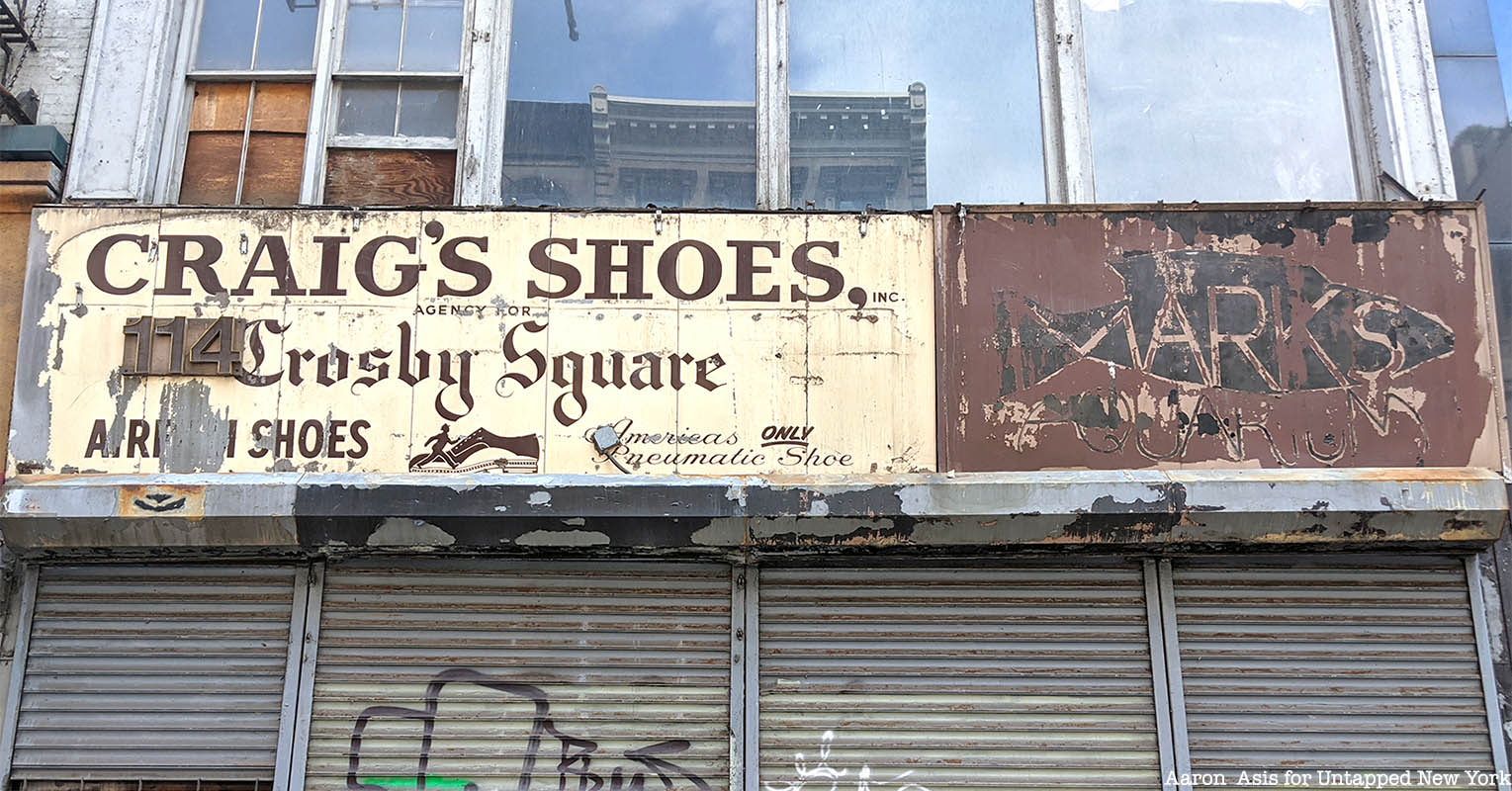Lower Manhattan has been quiet since the coronavirus pandemic but there have been changes notable to history buffs if you know where to look. Business closures in Lower Manhattan during and prior to the pandemic have revealed ghost signage that has been concealed for a long time. Here is what our photographers have documented recently, with the stories behind each of the locations.
William Barthman Jewelers
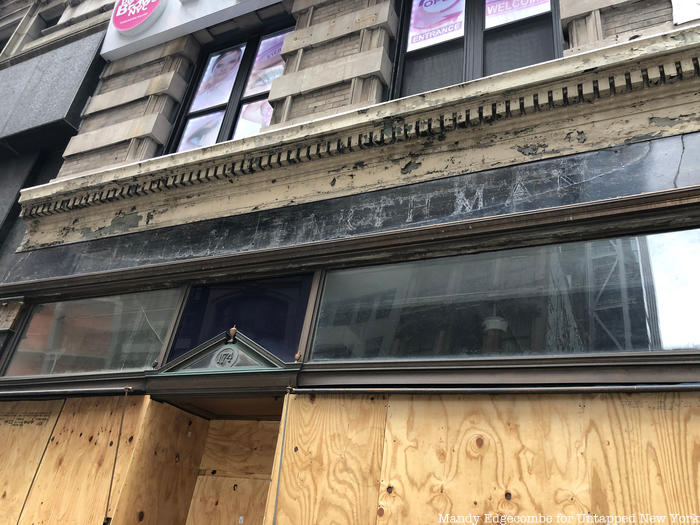
The original location of William Barthman Jewelers at 174 Broadway, in front of which is the famous Barthman sidewalk clock, has long been covered by newer signage. Most recently, it was home to one of the retail locations for The Vitamin Shoppe. A large Vitamin Shoppe sign on the frieze of the first floor concealed the remnants of the William Barthman signage until now. You can see the faint capital letters where gold-colored letters were once attached that spelled out WILLIAM BARTHMAN.
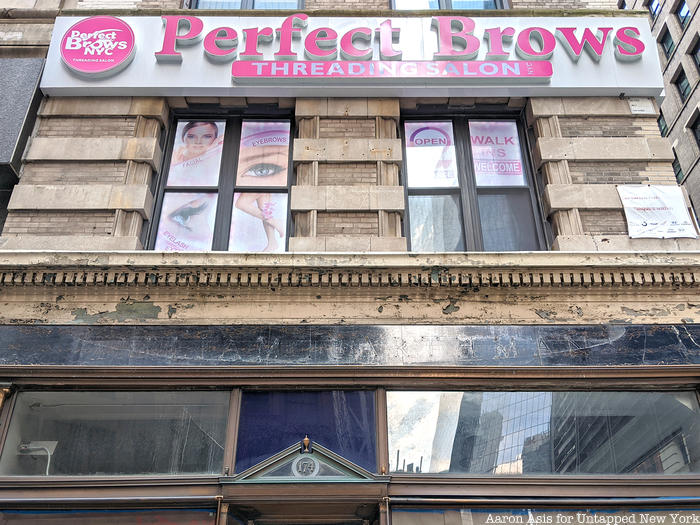
William Barthman Jewelers was founded by German immigrant and orphan Frederick William Barthman in 1884. His first store location was in the brick building that stood at 174 Broadway before the current one. It was demolished and replaced by a 13-story structure designed by architect C.P.H. Gilbert and completed in 1898. C.P.H. Gilbert was a well-known architect whose work dots Millionaire’s Mile on the Upper East Side, including the Ukrainian Institute (formerly the Harry F. Sinclair House) and the Convent of the Sacred Heart (formerly the Otto H. Kahn House).
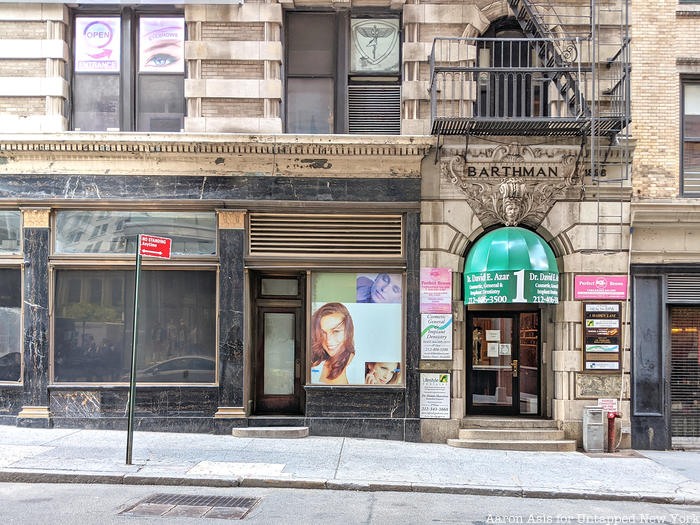
The removal of The Vitamin Shoppe branding has also offered a less distracting view of the architectural details on the ground floor of 174 Broadway, with a marble facade on both the Broadway and Maiden Lane sides, large shop windows, and gold-plated Corinthian capitals. A brass plaque on the facade erected by the Maiden Lane Historical Society in 1928 depicts the corner as it would have looked in 1880. Around the corner, you can still see the ornamented entrance to the rest of the building which also has the words BARTHMAN and 1898 above the entrance.
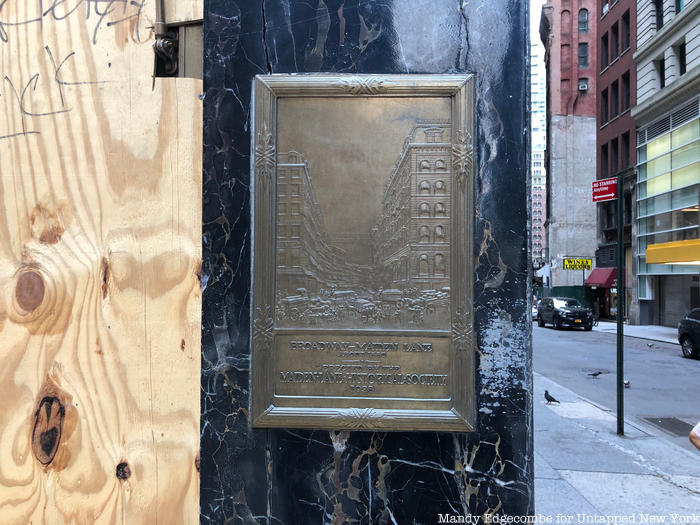
The sidewalk clock, first installed in 1899 to much fanfare, has undergone numerous restorations — the latest in 2018. Wear and tear, along with some graffiti, has rendered it already in need of a new restoration at this point in time.
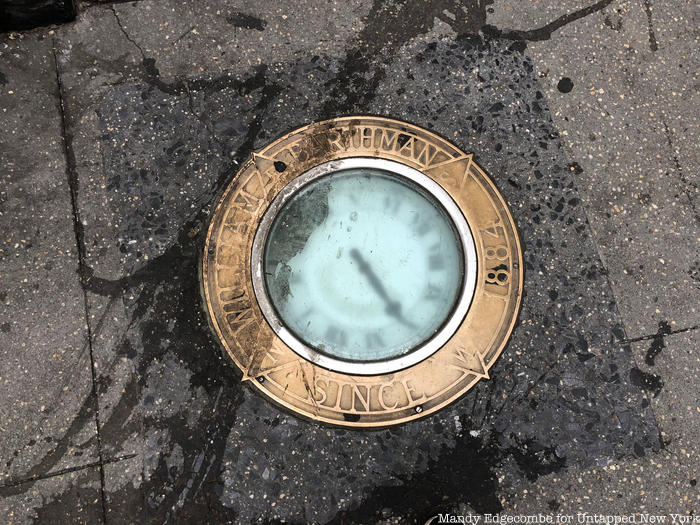
Craig’s Shoes
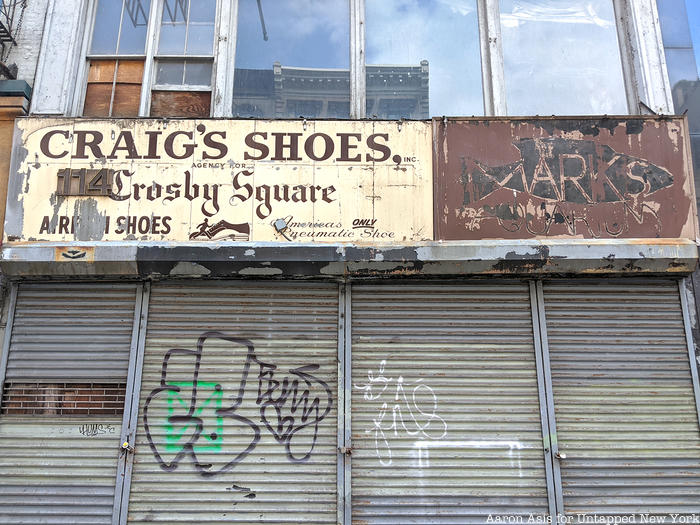
At 114 Chambers Street, a remnant of the former shoe district that once existed in this area was revealed last year. Its last incarnation was as Gavriel’s Shoes and a large awning in front simply covered over the previous business signage for Craig’s Shoes. Craig’s sold Crosby Square shoes, a company founded in 1867 that still exists making British-style mens footwear. Crosby was a household name from the 1930s to the 1960s, and was worn by President Harry Truman.
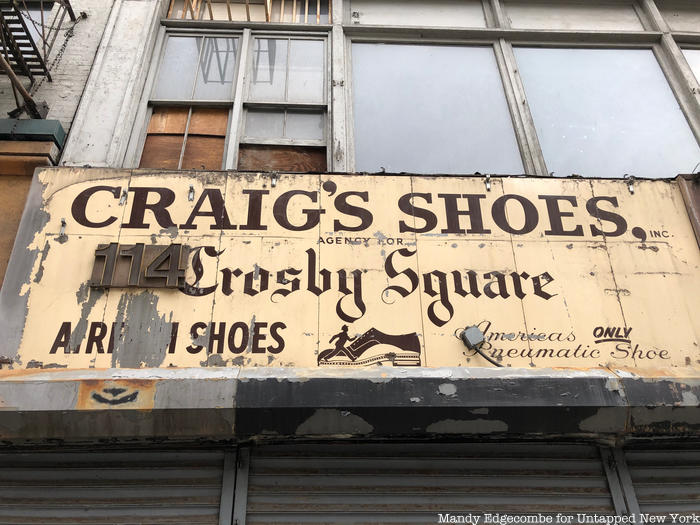
The words on the lower left of the signage say “AIR FILM” with the tagline “America’s ONLY Pneumatic Shoe.” If you’re wondering if this was the precursor to the Nike Air, you’d be correct. This referred to the Crosby “Airfilm” shoes that were built with a layer of “sealed air cells” that the company advertised would protect the wearer from “chilling, icy streets of Winter or the scorching pavements of Summer.” Airfilm material was made of 61% air, proclaimed the company, which also suggested that the sturdy shoes should be of particular interest to “Policemen, Firemen, Letter-Carriers, Motormen, Conductors, Bus Drivers, etc.”
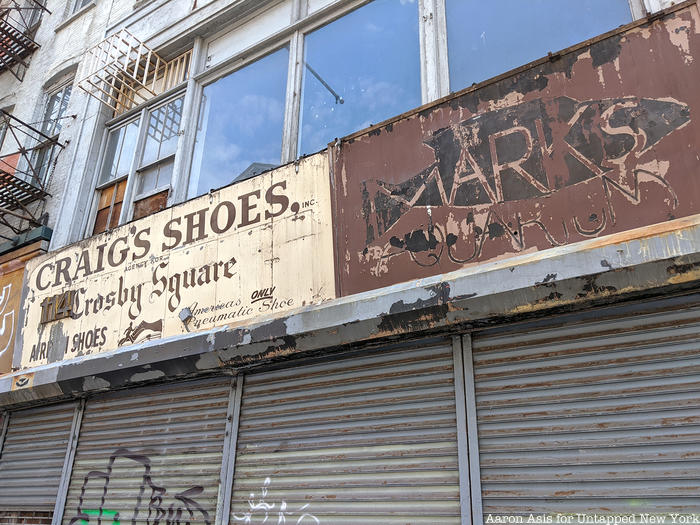
Craig’s Shoes opened in 1949, moved down the street in 1981 to a new location, and closed completely in 2006 when the rent became too high. Famous clientele of Craig’s included Robert de Niro who lived near by and LeBron James, who sent a personal shopper. The sign next to Craig’s is for Mark’s Aquarium, which had been raided by ASPCA in 1989 and had been known to rent out exotic animals like snakes.
Deli Delite
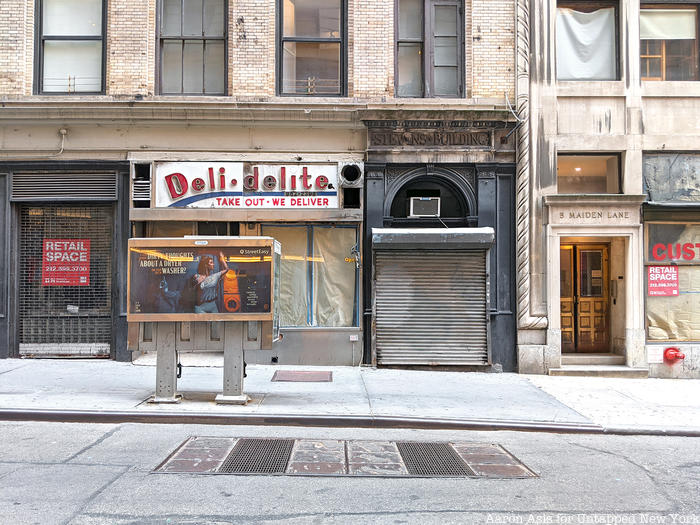
The signage for Deli delite which operated in the 1980s on the ground floor of the Stevens Building, just down the street from William Barthman Jewelers, has been revealed.
Loft’s Candies
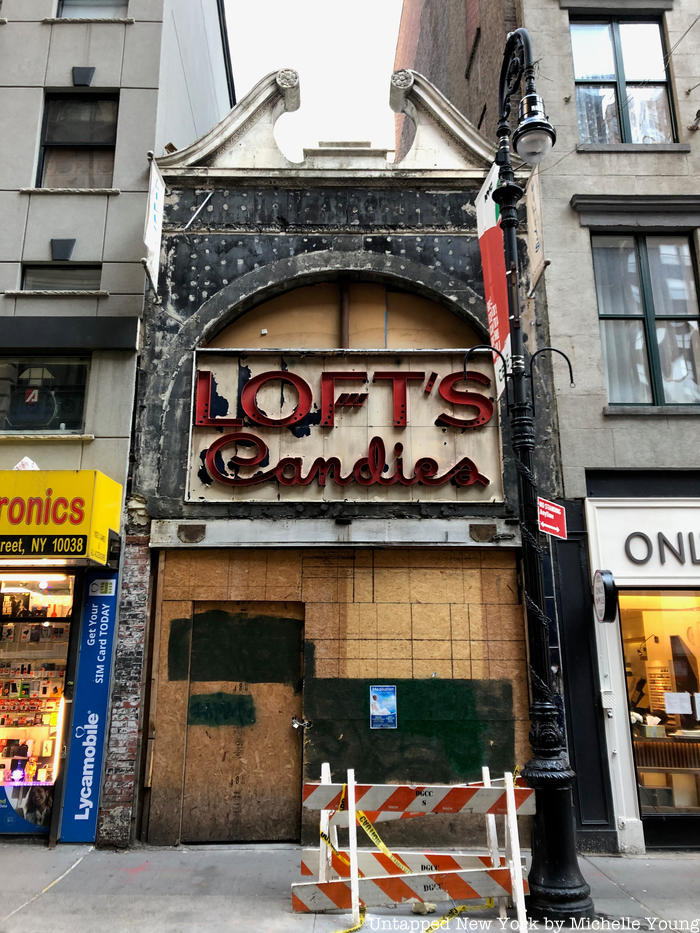
Loft’s Candies was founded in Lower Manhattan in 1860 by William Loft, and run as a family business. It was manufactured in Long Island City and over the years, would become a ubiquitous brand said to be the world’s largest manufacturer and distributor of candy in the 1920s. The company operated hundreds of stores throughout the eastern United States and midwest and came under many different ownerships, including by Pepsi-Cola.
The last Loft’s Candies stories were closed in 1994. This particular location at 86½ Nassau Street has been awaiting a new tenant and there was an application for liquor license for a restaurant and bar in 2018 which was approved to Sam O’Connor and Pat Hartigan, who ran The Trading Post at 17 John Street. The Trading Post will not re-open due to COVID and the Loft Candies sign still remains. Based on the Department of Buildings records, not much has been done with the building for the last few years apart from sprinkler work inside.
Today at noon, see more of the history of Lower Manhattan on a virtual talk of the Remnants of Dutch New Amsterdam. Use code STAYHOME for two months free Insiders membership!






